American Garden Ideas: Creative Tips for a Beautiful Backyard
If you’re looking to transform your garden, exploring American garden ideas can offer inspiration and practical tips. From traditional native techniques to modern design trends, there’s something for every style and preference.

How can you create a stunning yard that reflects both beauty and eco-friendly practices? By integrating various elements such as native plants, rain gardens, and thoughtful landscaping, your garden can become both functional and visually appealing. Enjoy discovering new ways to enhance your outdoor space with these tried and true American garden ideas.
1) Raised Vegetable Beds

Raised vegetable beds are a great addition to any garden. They help improve soil drainage and make it easier to control the quality of the soil. You can also grow a variety of vegetables like tomatoes, cucumbers, and kale.
These beds can be made from different materials like wood or metal. You can even repurpose old materials to create unique designs. They also help keep weeds at bay, making garden maintenance simpler.
For a decorative touch, you can paint or stain the wood to match your garden’s aesthetic. Raised beds bring beauty and practicality to your garden.
2) Native Wildflower Garden

Creating a native wildflower garden is a fantastic way to celebrate local flora. These gardens are beneficial for the environment and attract birds, bees, and butterflies.
Choose an area with at least six hours of direct sunlight each day. Wildflowers need plenty of sun to thrive.
Start by sketching a layout. Group plants with similar sunlight and water needs together. Consider popular options like Shrubby St. John’s Wort, which is native to the United States and grows bright yellow flowers.
Explore organizations like Wild Ones for more ideas and resources. Happy gardening!
3) Mediterranean Herb Garden
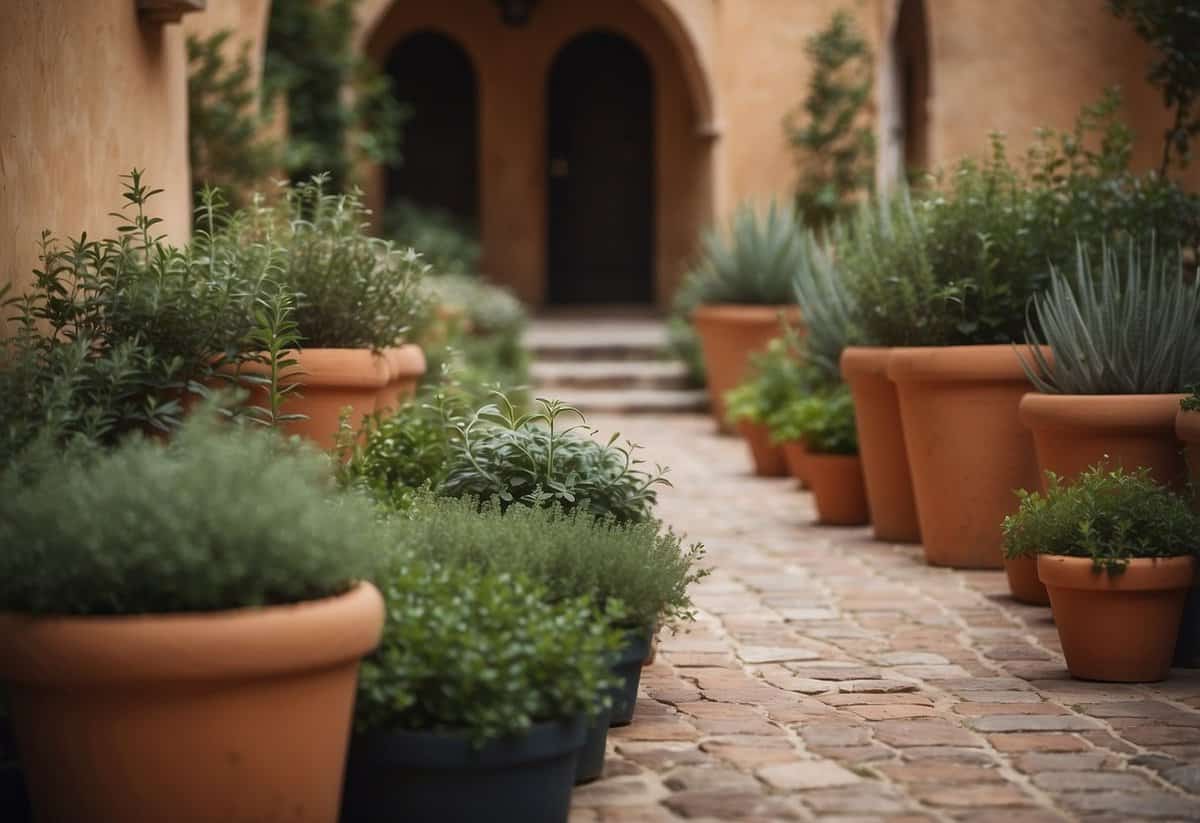
A Mediterranean herb garden is a delightful addition to any backyard. You can grow flavorful herbs such as basil, oregano, rosemary, thyme, and sage.
These herbs thrive in sunny, well-drained areas. Their fragrant leaves are perfect for cooking.
Consider using natural stone or clay pots for a rustic feel. Group herbs together for an attractive display. For more ideas, visit Mediterranean Herb Garden.
4) Vertical Wall Planters

Vertical wall planters are a fantastic way to add greenery to small spaces. You can use planters attached to a wall or fence, giving your garden a stylish and practical lift.
Another idea is to create a living wall with planters painted the same color as your wall, filled with plants like succulents or upright plants.
Try building a strawberry tower for a fun, easy project that can add beauty and function to your garden.
5) Outdoor Seating Nooks
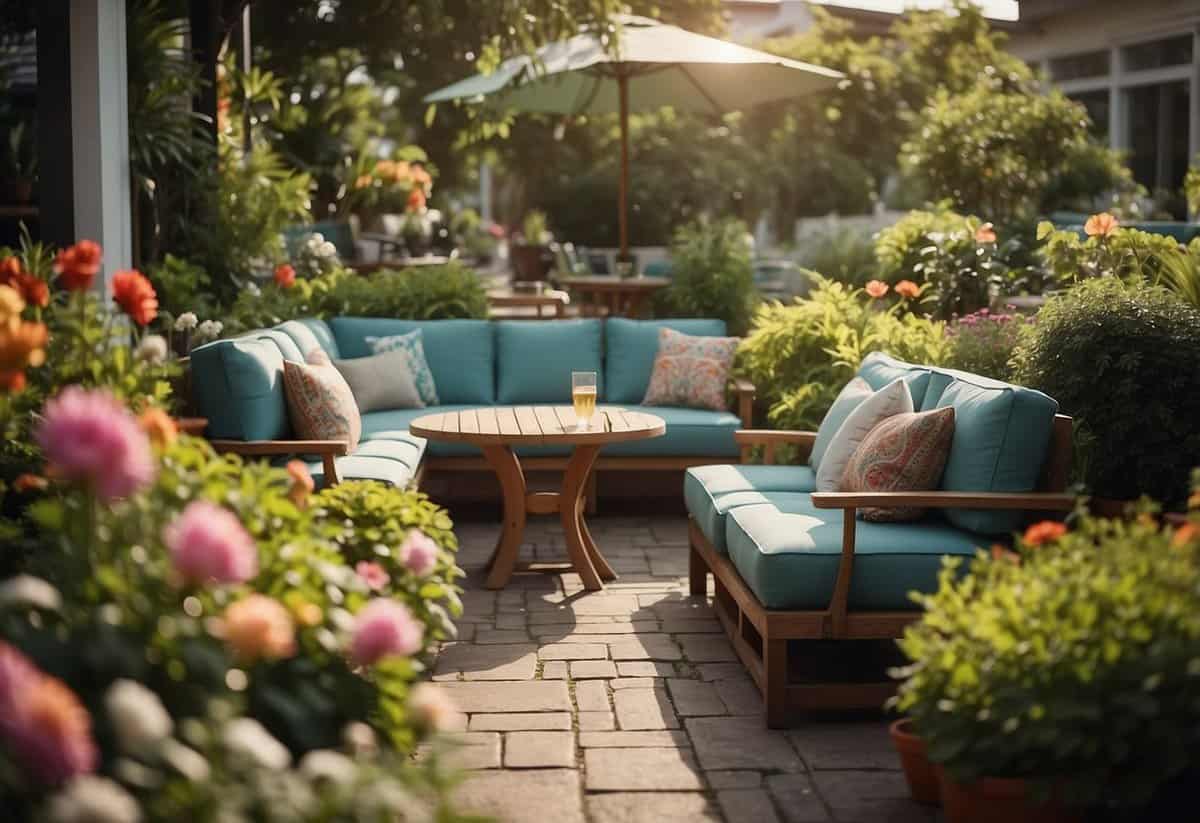
Creating outdoor seating nooks in your garden can provide a cozy spot to relax. Consider adding a garden bench on a shady path where you can enjoy some quiet time.
If you love vibrant colors, colorful deck chairs surrounded by potted plants can create a welcoming atmosphere.
For a bit more privacy, you could set up a lattice-covered outdoor patio area. This offers a serene escape right in your backyard.
6) Butterfly Habitat Garden
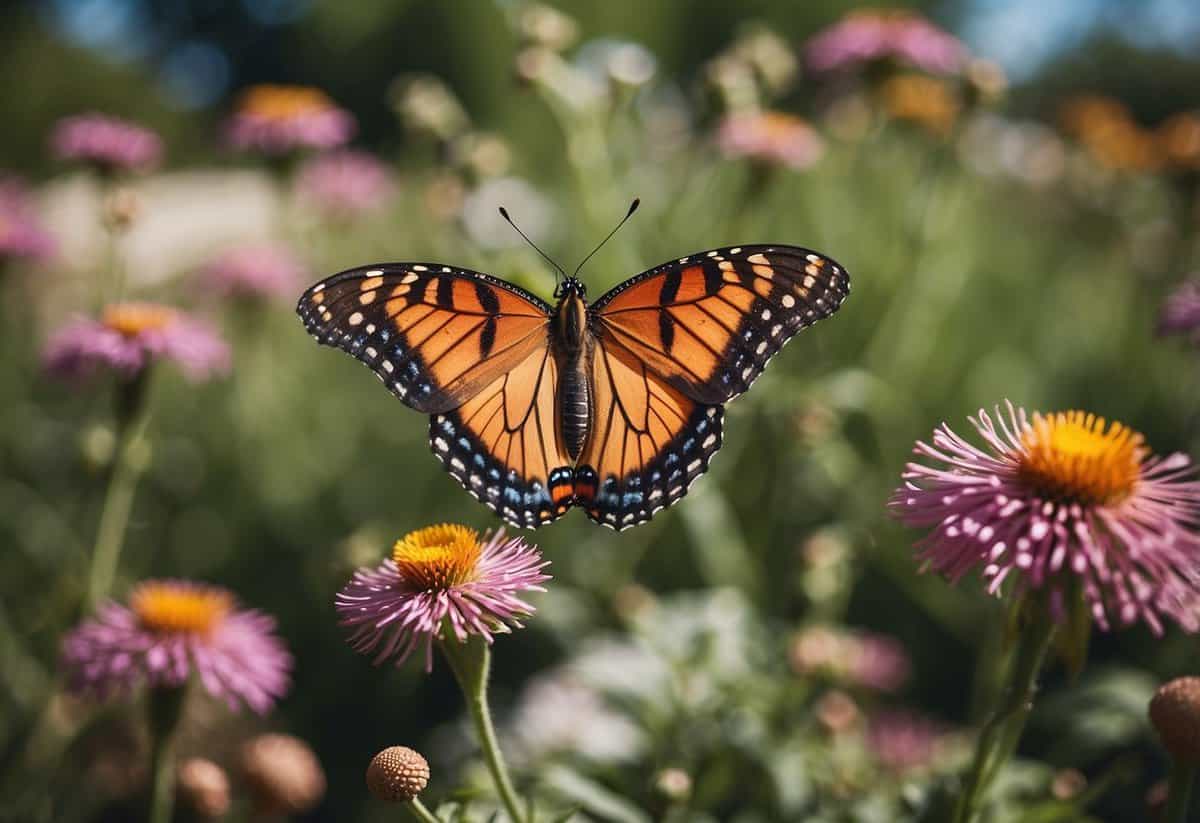
Create a butterfly-friendly garden by planting in sunny spots. Butterflies love warmth and sunshine to stay active. Include a variety of nectar-rich flowers like milkweed, lavender, and coneflowers to attract different species.
Add some shelter for butterflies. Create safe spaces with shrubs or small trees to protect them from strong winds and predators. Including a shallow water source helps butterflies stay hydrated too.
By following these simple steps, you can enjoy a vibrant and lively butterfly habitat garden. For more detailed guidance, check out ideas on Epic Gardening and Gardening Knowhow.
7) Hummingbird Feeders

Adding a hummingbird feeder to your garden is a great way to attract these tiny, colorful birds. You can easily create a feeder using common household items. For instance, using a plastic bottle and some foam shapes, you can make an eye-catching feeder that hummingbirds will love.
Consider making a simple feeder from a SOLO cup, scissors, and string. Just cut holes in the sides of the cup for the birds to access the nectar inside.
Another idea is upcycling a wine bottle. Cut holes for feeding ports and add perches for the birds to rest. Fill it with homemade nectar, and you’re ready to go.
8) Rustic Garden Fencing
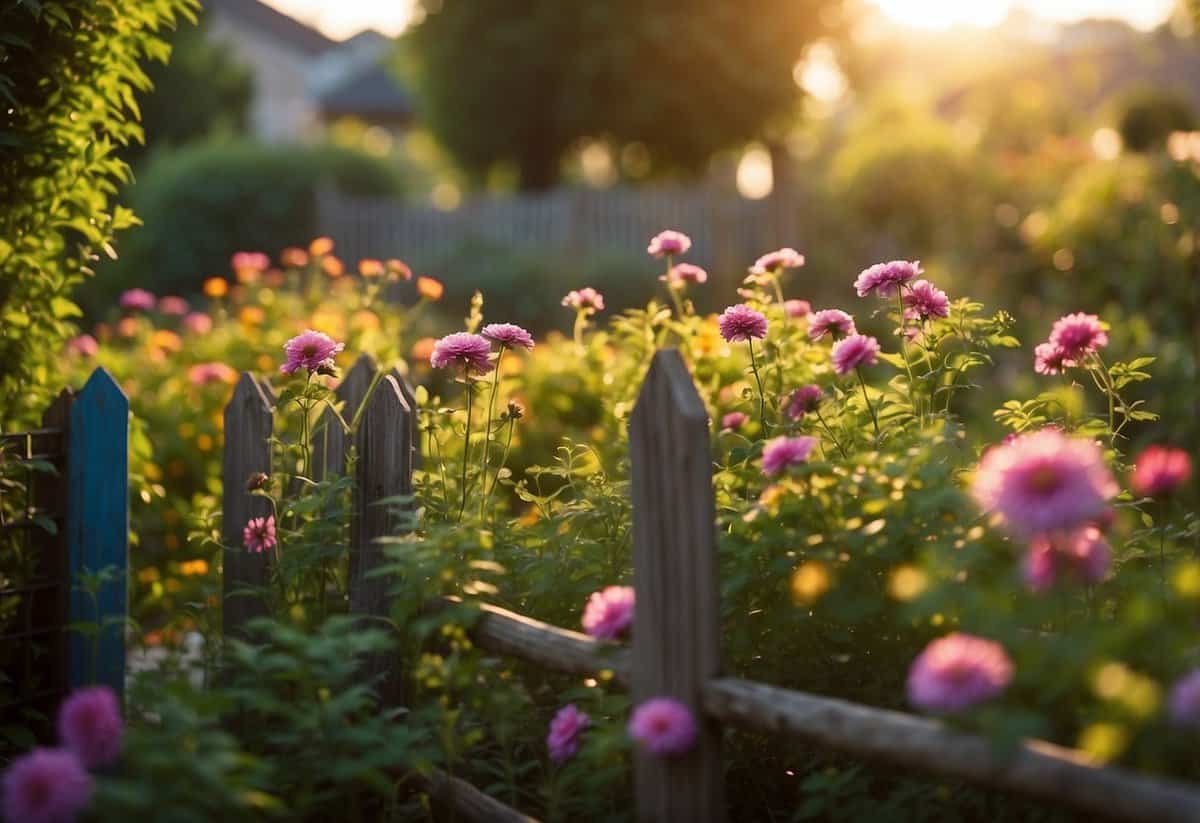
Rustic garden fencing can add a charming and natural look to your outdoor space. You can embrace the beauty of weathered wood fences or try a woven branch fence for a more handmade feel.
Natural wood styles blend well with the surroundings and create a peaceful vibe. Consider using reclaimed wood or old barn wood to add unique character to your garden.
9) Garden Pathways with Reclaimed Wood

Using reclaimed wood for garden pathways adds a rustic charm to your backyard. It’s an eco-friendly option that repurposes old materials. You might use wooden planks from an old deck or barn.
Reclaimed wood paths are easy to create. Simply lay the wood pieces in your desired pattern. This gives your garden a unique, personalized touch. Learn more about stunning reclaimed wood paths.
10) Fairy Garden Décor
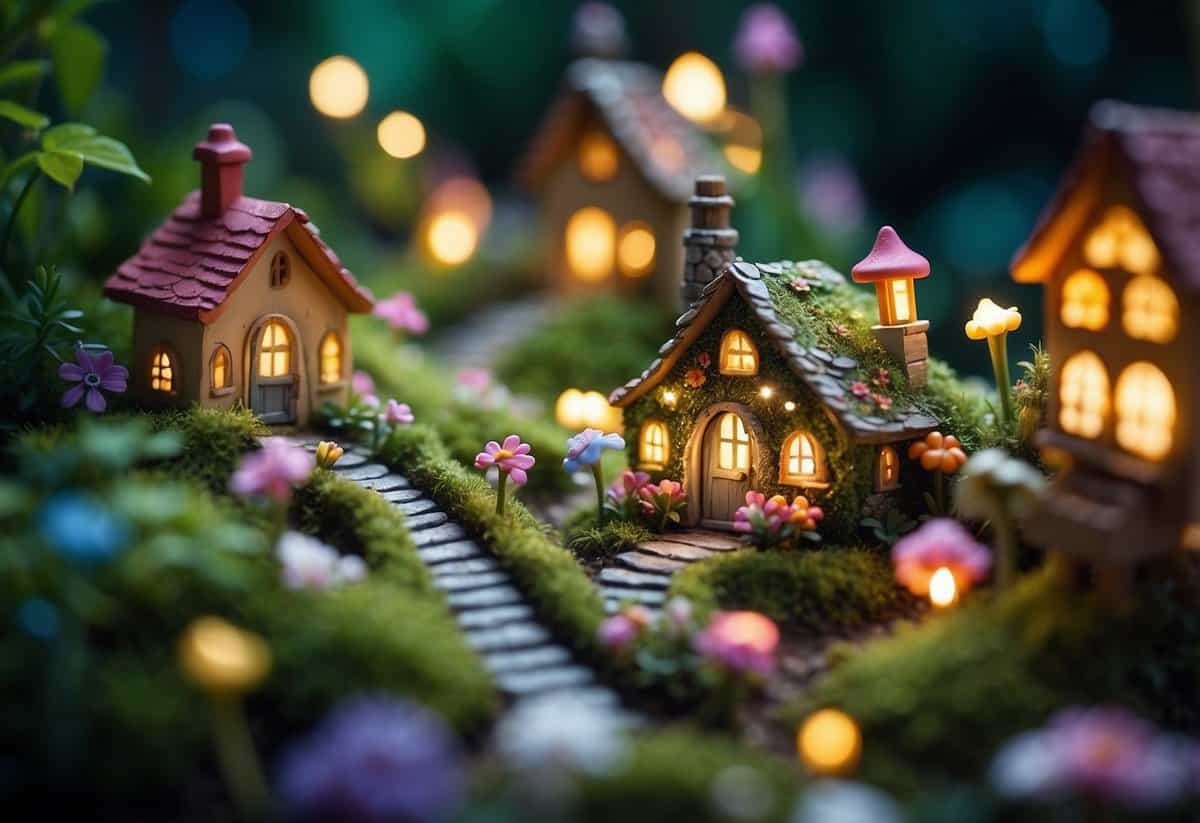
Creating a fairy garden is all about adding magical touches. Use ferns, moss, and creeping thyme for a soft ground cover in shady spots.
Include vining plants like morning glory or honeysuckle to fill trellises.
Add tiny houses or fairy doors to create an enchanting atmosphere. Include colorful flowers and mini bird baths to attract real wildlife, making it truly magical.
Design Principles for American Gardens

When planning your American garden, focus on using native plants and creating a balance between looks and functionality. These principles help create a garden that is both beautiful and practical.
Incorporating Native Plants
Native plants are key to a thriving American garden. They are adapted to the local climate and soil, which means they require less water and maintenance.
For example, in the Northeast, plants like the Eastern Redbud and Black-Eyed Susan thrive naturally and support local wildlife.
Using native plants also helps control pests. By planting species that naturally grow in your area, you create a balanced ecosystem. This reduces the need for pesticides and other chemicals, making your garden healthier and more sustainable.
A few popular native plants in America:
- Purple Coneflower: Great for attracting pollinators.
- California Poppy: Perfect for dry, sunny spots.
- Switchgrass: Adds a beautiful texture to your garden.
Balancing Aesthetics and Functionality
Creating a garden that looks great and works well is a top priority. You want your garden to be a place where you can relax and also grow veggies or herbs if you wish.
Start by zoning different areas in your garden. You can have a seating area, a play zone for kids, and a vegetable patch. Use hedges, pathways, or even different types of flooring to mark these zones clearly.
Think about pathways. Making sure they are wide enough for easy movement is important. Plus, try using materials like gravel or wood chips that blend well with plants.
Pick plants not just for looks but also for function. For instance, tall bushes can act as windbreaks, while flowering plants attract pollinators.
Remember, a well-balanced garden is not just beautiful but also makes outdoor living more enjoyable and sustainable.
For more tips on creating your beautiful garden, you can explore eight basic design principles.
Creating Beautiful Outdoor Living Spaces
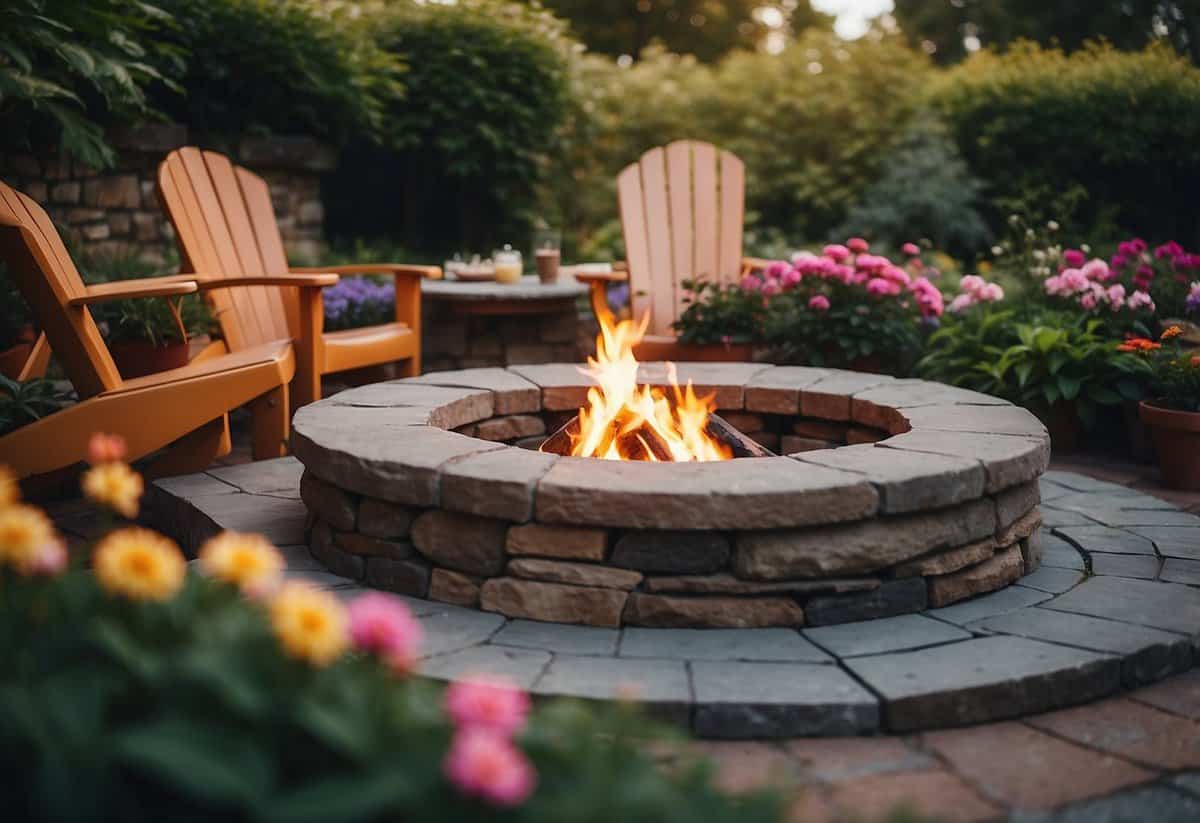
Transforming your garden into a beautiful outdoor living space involves blending different elements. Focus on integrating patio areas and using outdoor lighting to create a welcoming atmosphere.
Integrating Patio and Deck Areas
Patios and decks are essential for any outdoor living space. First, consider the layout and size. A well-placed patio or deck offers a solid foundation for furniture and decorations.
Use materials like wood, stone, or composite decking. Each has its benefits. Wood is natural and warm. Stone is durable and adds a rustic touch. Composite decking requires less maintenance. Mix materials for a unique look.
Adding features like an outdoor sofa, coffee table, or dining set creates a comfortable space. Plan for shade with umbrellas or pergolas. It’s important for hot days. Surround your patio with greenery. Plants and flowers soften the edges and add color.
Utilizing Outdoor Lighting
Outdoor lighting enhances the atmosphere and usability of your space. Start with path lights. They guide guests and highlight garden features. Solar-powered lights are eco-friendly and easy to install.
String lights are popular for patios and decks. They create a cozy ambiance. Hang them between posts or trees. Use weatherproof varieties for safety. Lanterns and outdoor lamps are another option. Place them on tables or hang from hooks.
Accent lights draw attention to specific areas. Use them to spotlight plants, sculptures, or water features. Dimmers allow you to adjust brightness. It’s useful for different occasions. Lastly, consider motion-sensor lights for security. They deter unwanted visitors and provide light when you need it.







